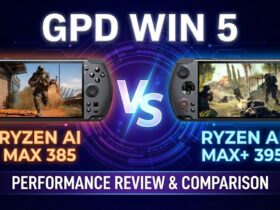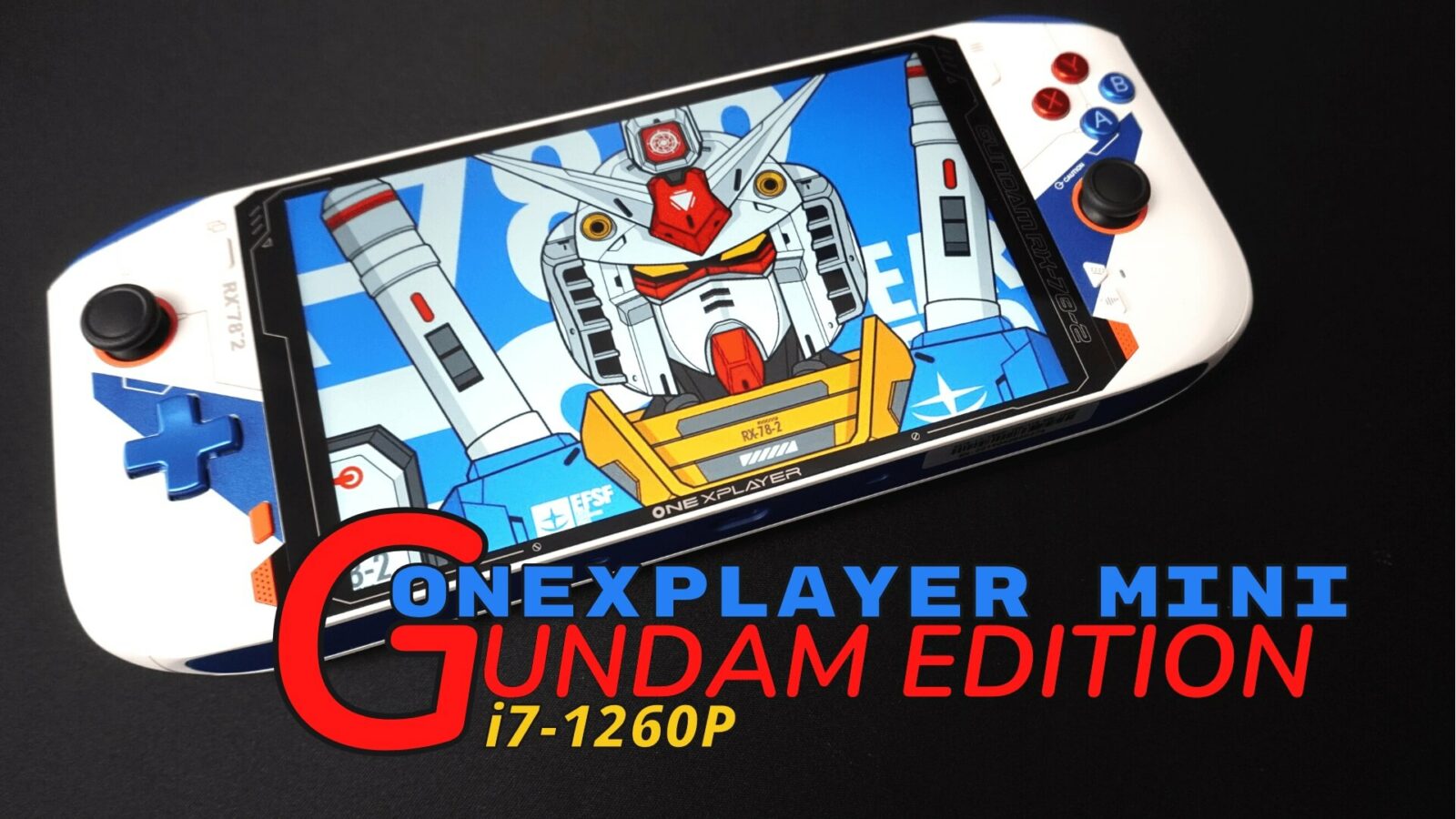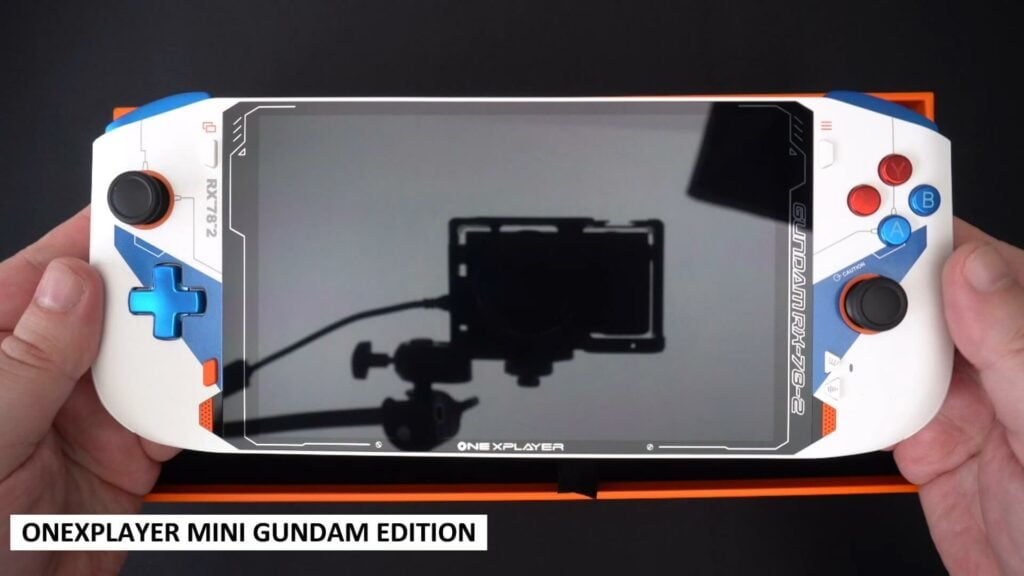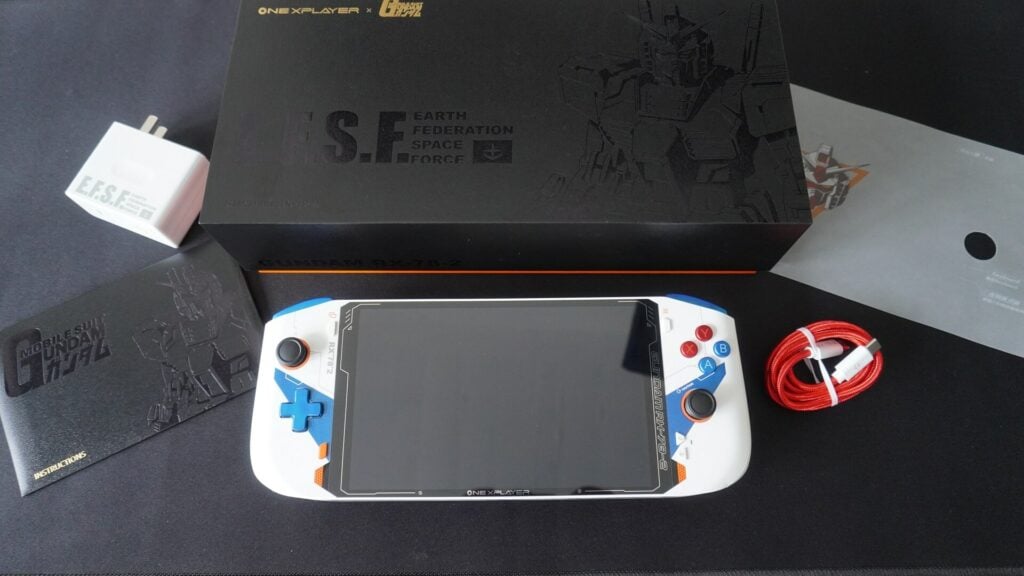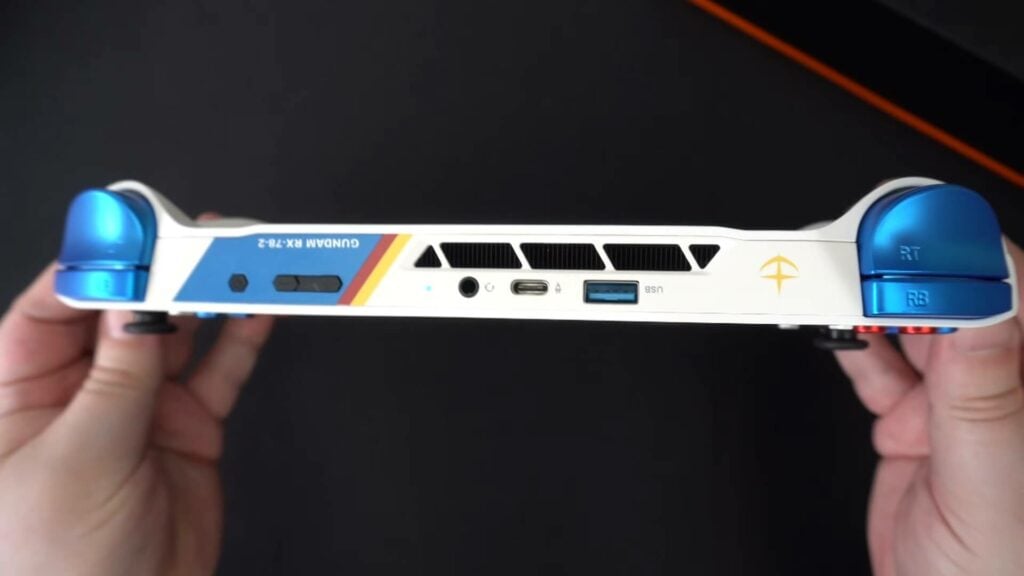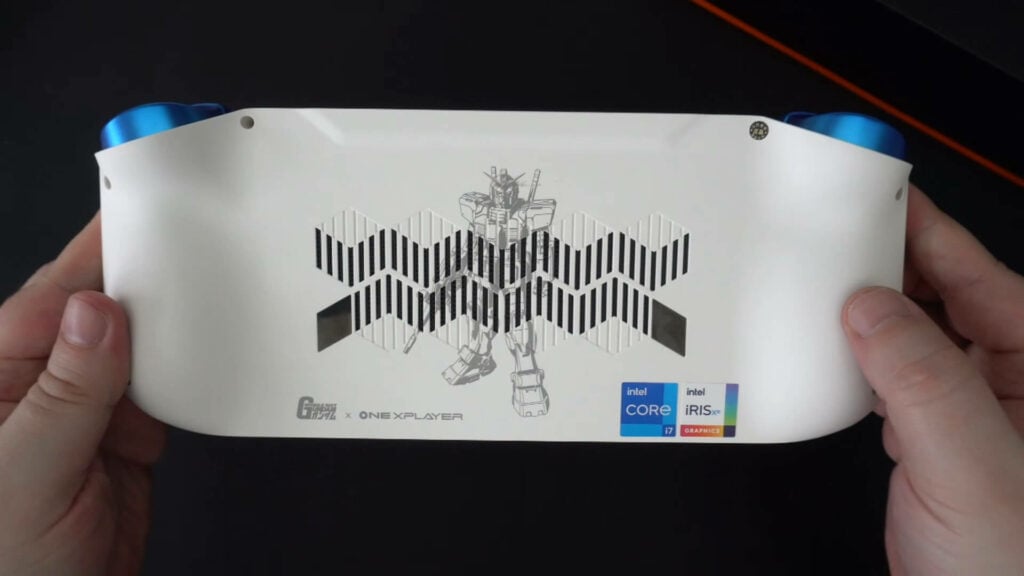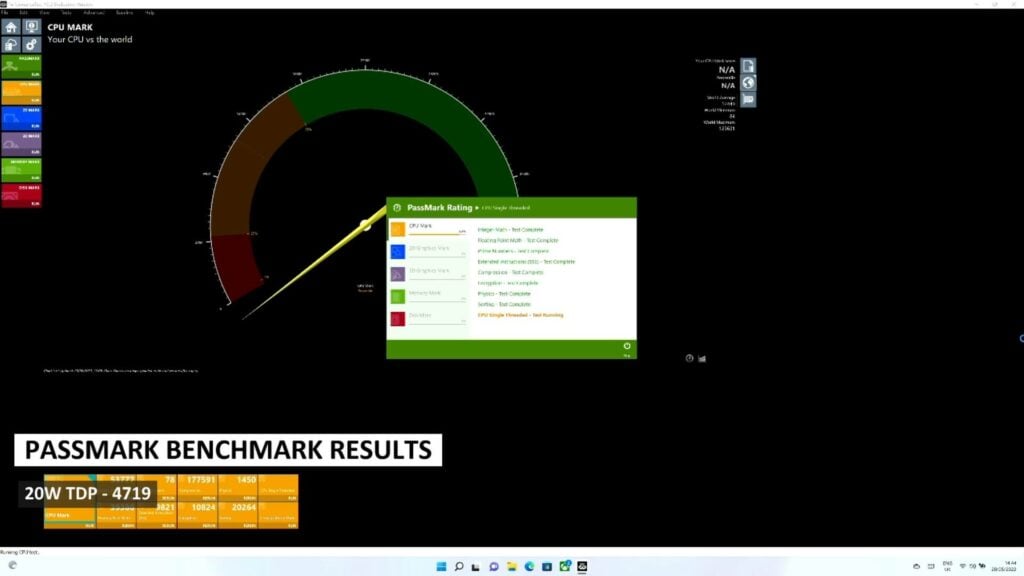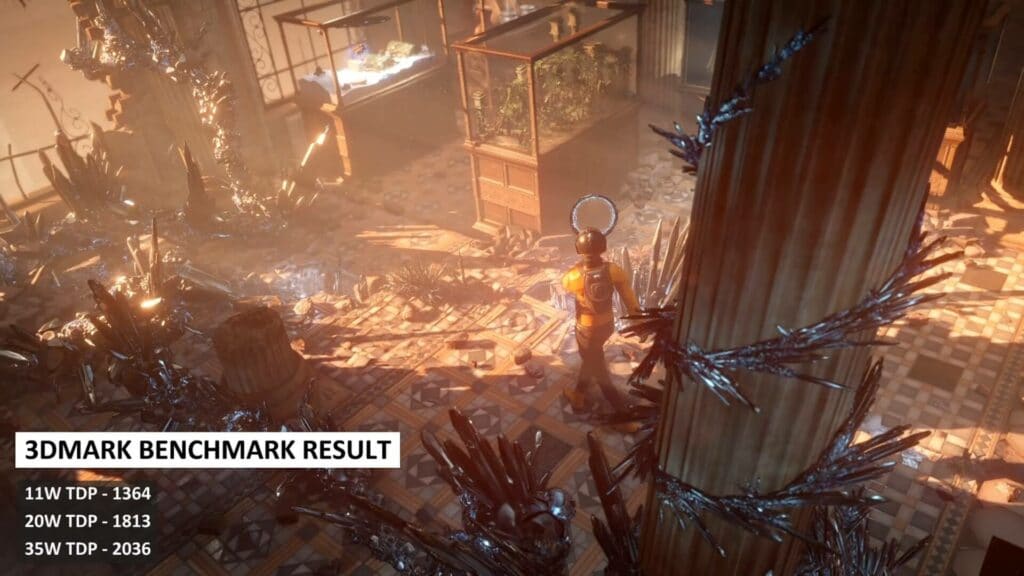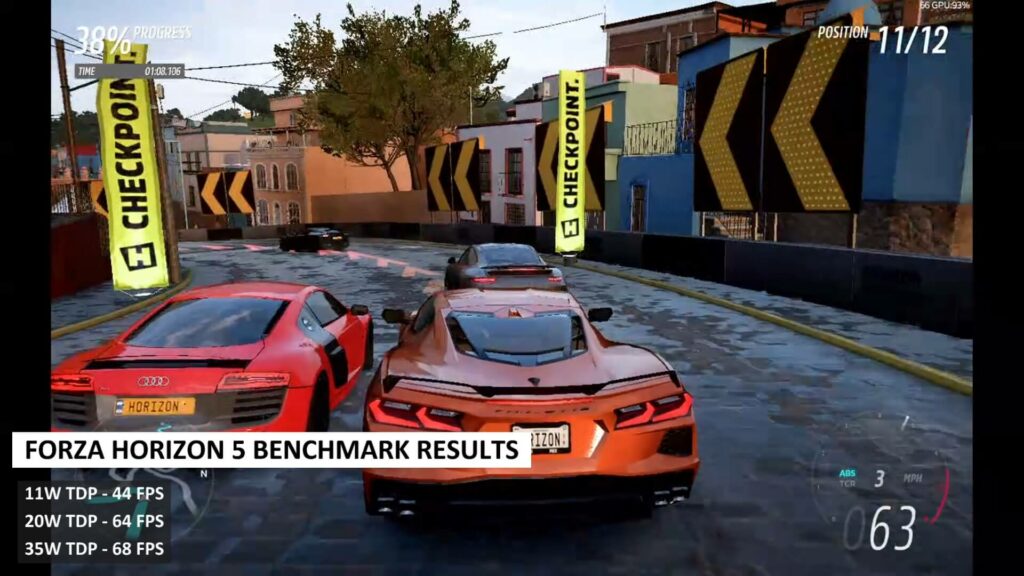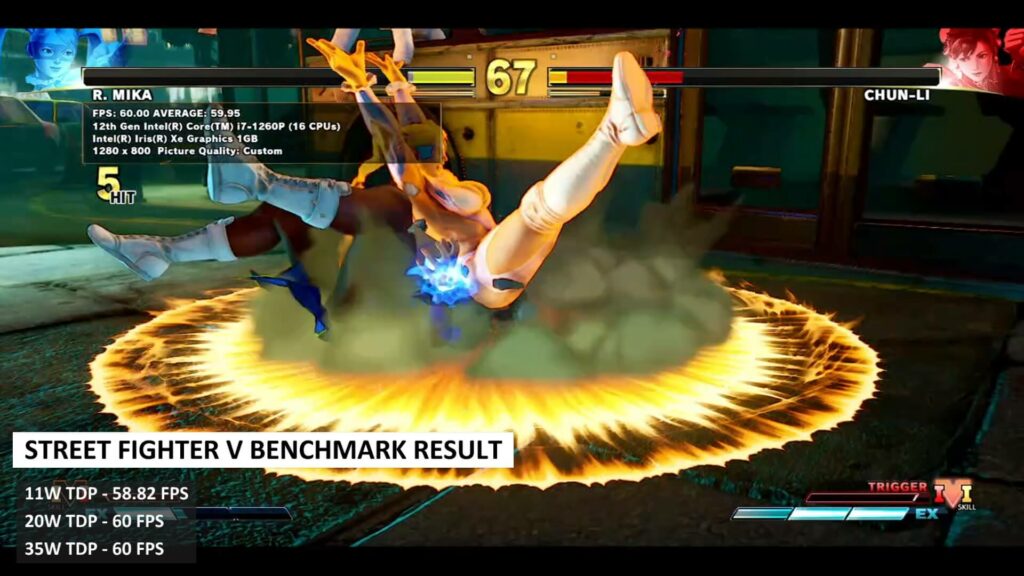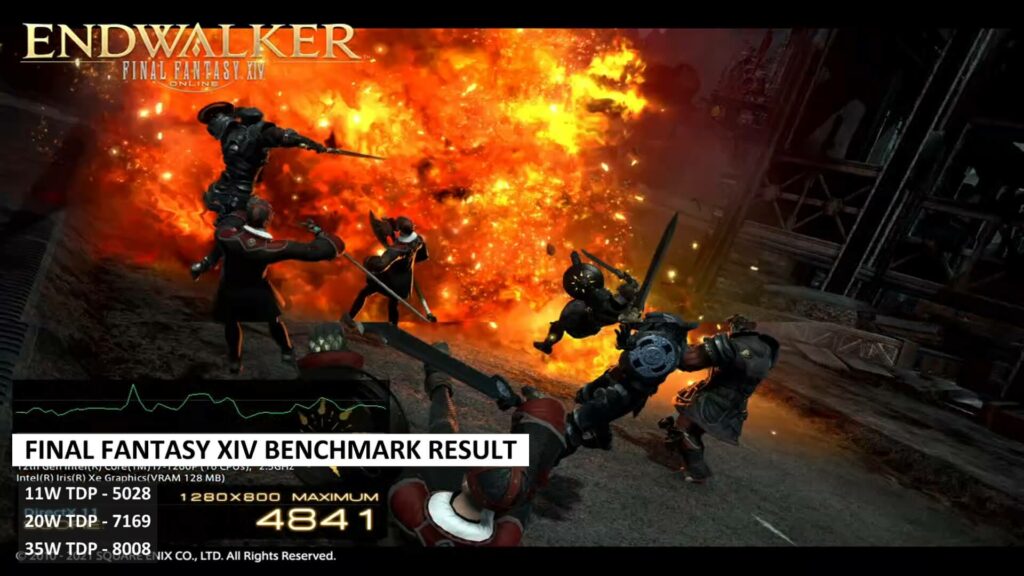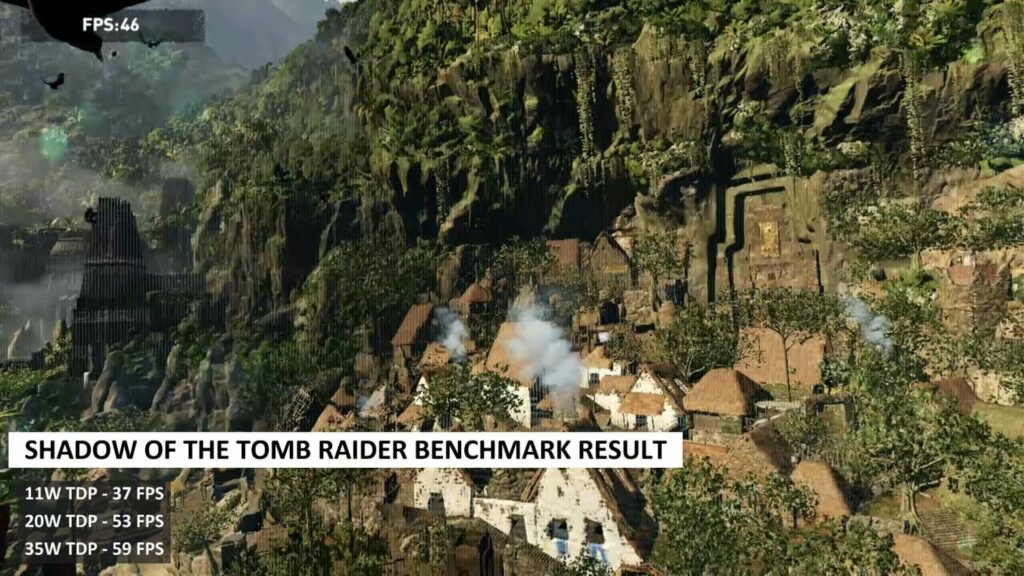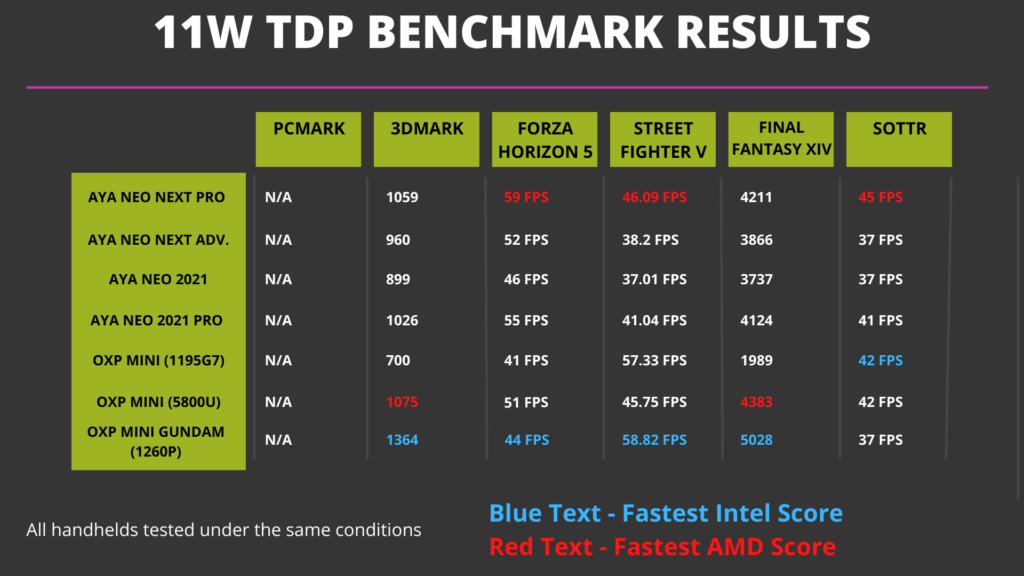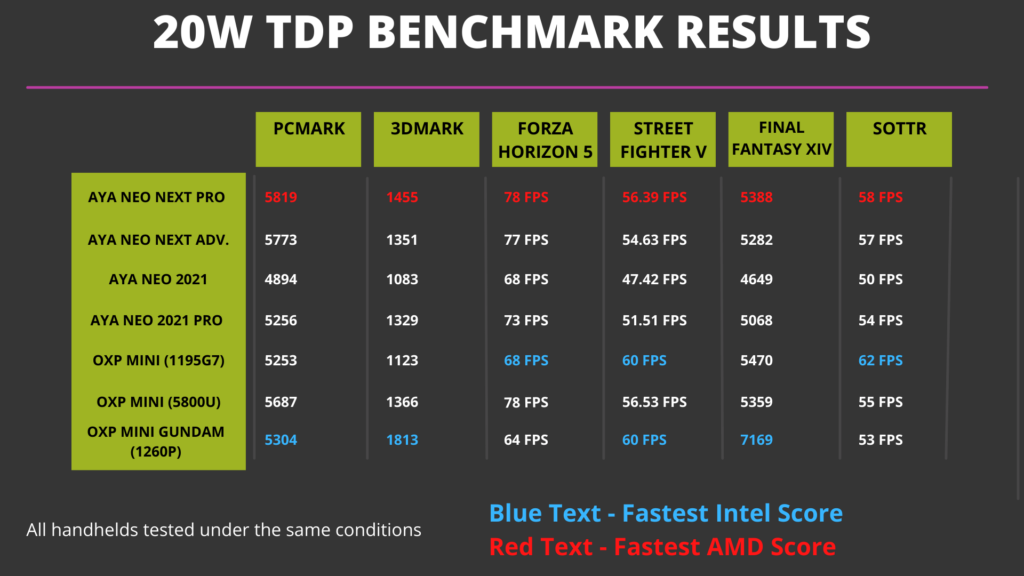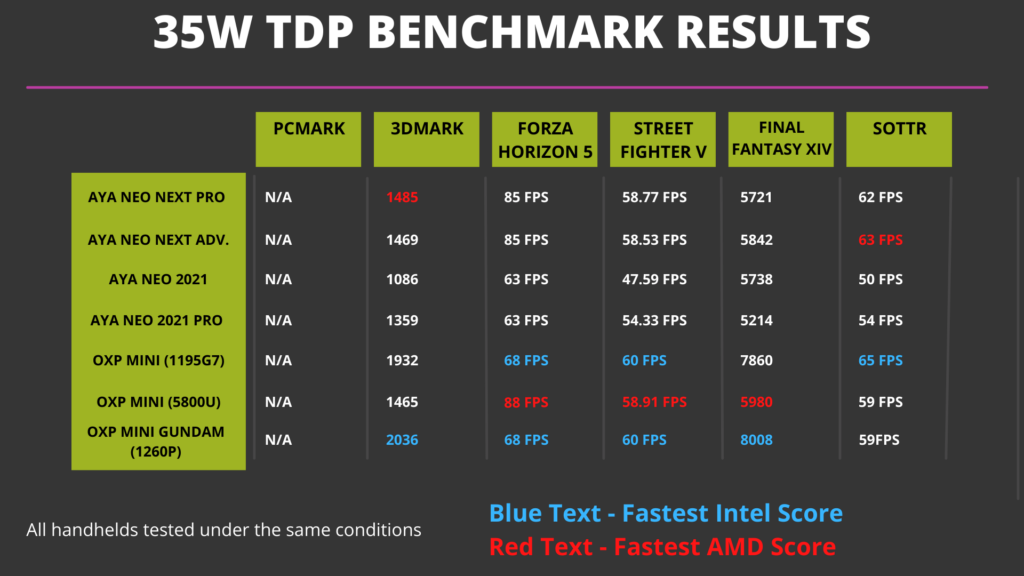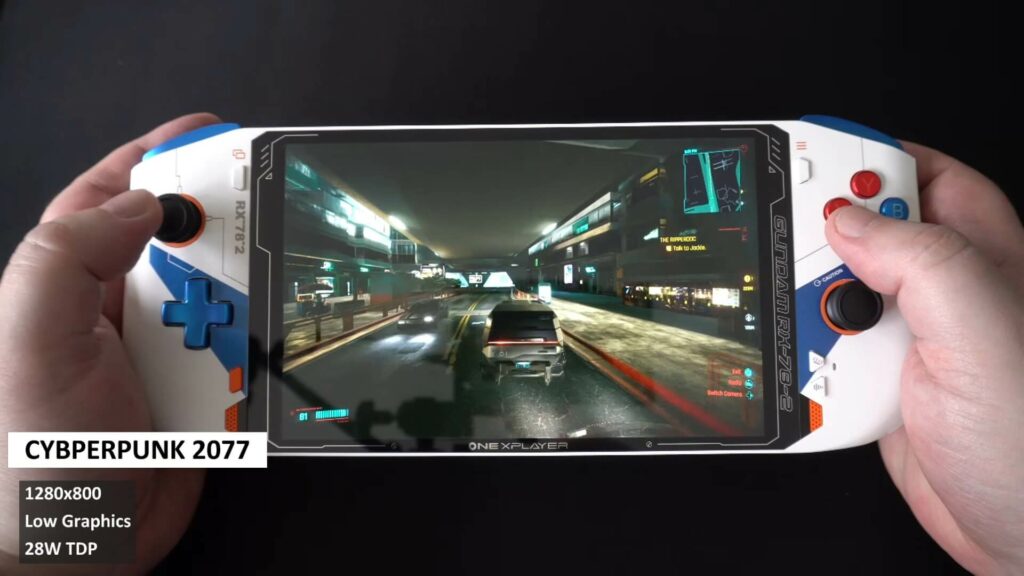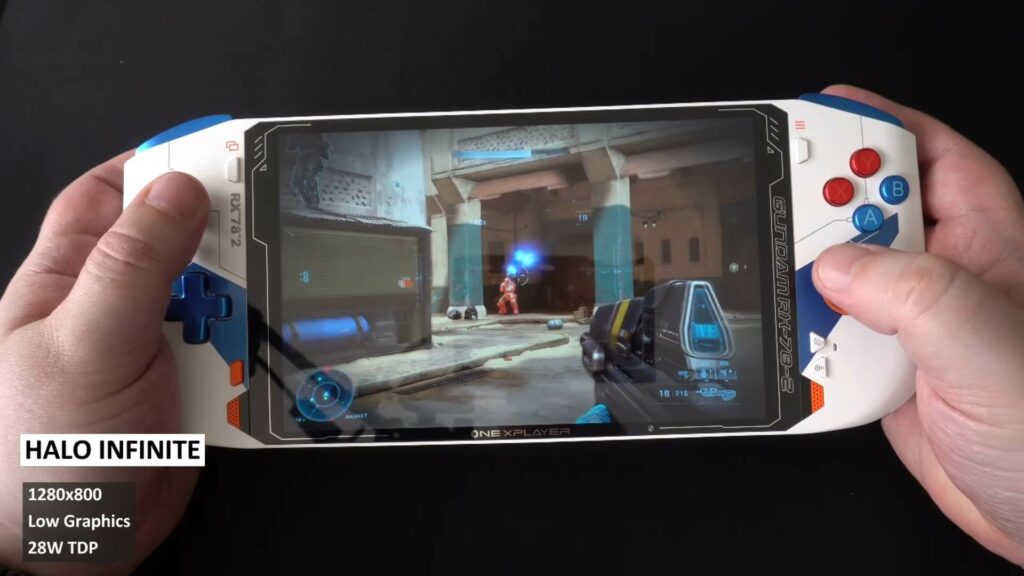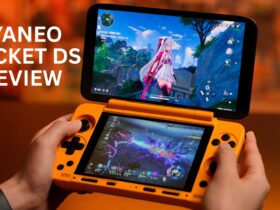ONEXPLAYER Mini Gundam Edition
-
Design
(5)
-
Build Quality
(5)
-
Display
(5)
-
Performance
(4.5)
-
Features
(5)
Summary
The ONEXPLAYER Mini Gundam edition is a great look of how the 12th generation Intel processors will perform. If you do get the chance to pick one of these up, you will find a nice boost in performance for an Intel processor.
Overall
4.9User Review
( votes)Pros
- Great Gundam theme throughout the handheld and accessories.
- Fast 12th Gen. Intel i7-1206P processor
- Fast DDR5 RAM, also the first Windows handheld to use DDR5
- Amongst the highest results in our handheld benchmarks
Cons
- Only available to buy from China due to licensing.
Today we are checking out something quite special. It is a limited edition ONEXPLAYER Mini Gundam edition which is only available to buy in China due to licensing. As well as the amazing design it also features the brand new Intel i7-1260P processor. How does it perform, let’s find out?
ONEXPLAYER Mini Gundam Review Video
Unboxing the ONEXPLAYER Mini Gundam Edition
As always, we start with the unboxing. The box kicks off the Gundam theme with gold writing and an embossed Earth Federation Space Force (EFSF) and mobile suit artwork on top. Lifting the lid reveals an overlay with a Gundam suit head along with some text. It’s a nice touch, not seen with the other ONEXPLAYER models yet.
And we have the ONEXPLAYER Mini Gundam edition in all its glory. We will take a closer look at it shortly.
Underneath is a Gundam theme embossed envelope. Inside is a themed user guide which is in Chinese. And last but not least we have a Gundam themed box. Inside we have a white power supply which has the EFSF text, mobile suit number and logo printed on it. It looks really nice!
And we have a red USB Type-C cable, on the connectors are the logo and suit number printed on it.
ONEXPLAYER Mini Gundam Overview
The Gundam edition is based on the ONEXPLAYER Mini and apart from the Gundam theme there are no other changes to the physical design.
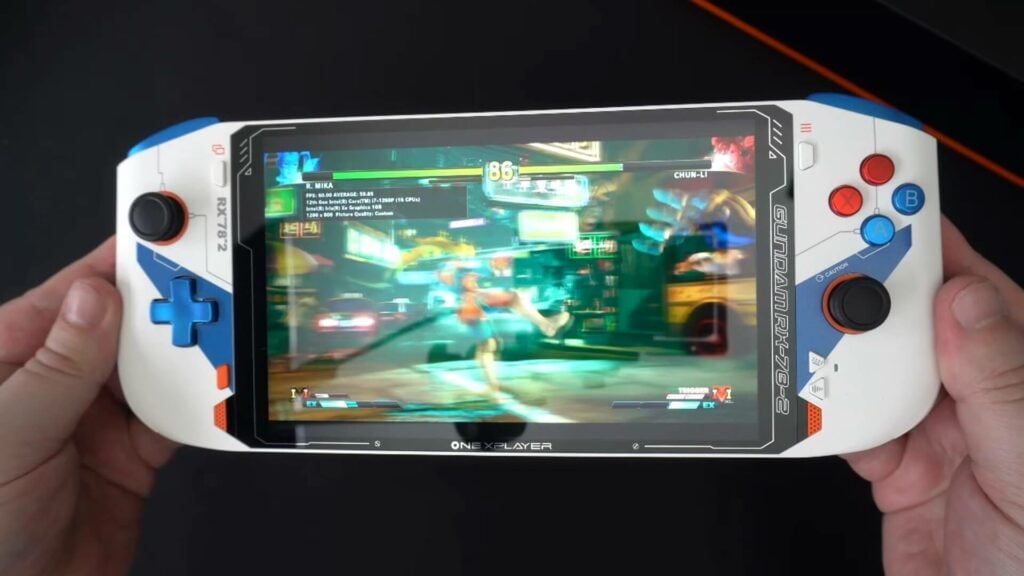
Taking a closer look at the theme we can see that it has been used throughout the front. The D-Pad has a blue metallic finish, and this extends to the orange and blue gaming buttons.
The artwork is very fitting. with the Gundam RX-78-2 text along the side of the screen cover and the head wings of the mobile suit sticking out from it.
Along the top we have those lovely looking metallic finish left and right; shoulder and trigger buttons with some theming in between.
And on the back amongst the fan grill is a Gundam mobile suit print.
ONEXPLAYER Mini Gundam Technical Specifications
| CPU | Intel Core i7-1260P 12-cores / 16 threads Max. frequency 4.70 GHz 28W TDP |
| GPU | Intel Iris Xe Graphics Up to 1.40GHz 96 Execution Units |
| RAM | 16GB LPDDR5-5200 |
| STORAGE | M.2 2280 PCIe 3.0 x4 M.2 PCIe 4.0 x4 512GB / 1TB / 2TB options |
| COMMUNICATIONS | WiFi 6 Bluetooth 5.0 |
| BATTERY | 12,450 mAh / 11.55V 48 Wh Idle: 7 hours Full load: 1 hour 40 mins. |
| FAN NOISE | 61dB highest fan noise |
| TEMPERATURE | 46°C / 114 °F highest temperature |
Fan noise and temperature tested under full load while running Cinebench for 10 minutes.
System Benchmarks
PassMark
PassMark runs a series of tests on the CPU, GPU, RAM and storage to push them to their maximum. This gives us an artificial indication of their performance under full load.
At 20W TDP, the ONEXPLAYER Mini Gundam scores 4,719. It is a good score, in the ballpark of the ONEXPLAYER Mini 1195G7, but not as fast as the 5800U model. We will show a summary at the end of the benchmarks and compare with the other handhelds.
PCMark
PCMark tests your more day to day tasks you may perform while not gaming. These range from web browsing, media consumption and working with large office documents.
At 20W TDP the ONEXPLAYER Mini Gundam scores 5,304. It is our highest score for an Intel based gaming handheld at this TDP.
3DMark
3DMark runs a series of tests with the CPU and GPU to see how they perform together for video related tasks such as image processing through to graphics rendering.
We are testing 3DMark at 11, 20 and 35W TDP to see the difference in performance and how well it scales up over the three TDP’s.
We get a score of 1,364, 1,813, and 2,036 across the three TDP’s. The scores are our fastest score out of all the gaming handhelds we have tested!
Gaming Benchmarks
Forza Horizon 5
We are testing Forza Horizon 5 at 1280×800 on the default lowest graphics settings. We are also running it with 11, 20 and 35W TDP.
We get frames per second of 44, 64 and 68. For an intel based device they are good scores. Compared with the ONEXPLAYER 1S with 1195G7 processor, it is faster at 11W, slower at 20W and faster at 35W.
Street FIghter V
For the Street Fighter V benchmark we are running at 1280×800 on the maximum graphics settings. Again running at 11, 20 and 35W TDP. At the end of the first match we are getting the average frame rate.
At 11W we get 58.82 frames per second, it’s the highest in our handheld benchmarks. At 20W and above, it reaches the maximum 60 frames per second.
Final Fantasy XIV
We are running the Final Fantasy XIV benchmark at 1280×800 on the maximum graphics settings.
At 11W we get a score of 5,028, at 20W we get a massive 7,169. And at 35W we get 8008. These are the highest scores we have got in our handheld benchmarks.
Shadow of the Tomb Raider
In our final games benchmark we are running Shadow of the Tomb Raider at 1280×800 on the default lowest graphics settings.
At 11W we get 37 frames per second, at 20W we get 53, and at 35W we get 59. They are OK scores, not the highest but certainly not the lowest.
Benchmark Summary
Let’s have a brief look at the benchmark scores compared to other handhelds.
At 11W the Mini Gundam does the best on 3DMark with the highest score we have for all our handheld benchmarks. It is the fastest Intel based processor for Forza Horizon 5, though the AMD models are still quite far in front . It is the outright fastest on Street Fighter V and Final Fantasy XIV benchmarks.
At 20W the Gundam model keeps the pace going with the highest scores on 3DMark, Street Fighter V and Final Fantasy XIV.
And at 35W it is again the fastest on the 3DMark, Street Fighter V and Final Fantasy XIV benchmarks.
There are a few discrepancies that we noticed such as lower frame rates on some benchmarks compared to the ONEXPLAYER Mini with 1195G7 processor. This may be due to drivers or hardware differences. It could be how the TDP and processor work with some games. For example requiring more CPU than GPU processing, or vice versa.
Overall the ONEXPLAYER Mini Gundam is very impressive, with better if not similar scores to its 1195G7 equivalent. I do think we could see improvements on the Intel drivers for this fairly new processor which could speed things up a little. It gives us a great indication of how the 12th generation Intel processors will perform in the future. Let’s hope that it’s not long before we see a new model!.
Gameplay Tests
We are trying a few games with the handheld to see its performance at the default TDP which is 28W. Don’t forget, if you have an eGPU you can connect that to the Mini for faster and higher quality graphics levels.
And a quick reminder if you have not already please take a moment to subscribe. It helps to grow this channel and you keep up to date with new gadgets like this handheld, everyone wins! Thanks!
Forza
We already know from the benchmarks that we get 64 frames per second at 20W. At 28W we can lock it to 60FPS and get fairly stable frame rates while playing. With some minor changes to the graphics you can increase one or two settings
Cyberpunk 2077
We are getting between 30 to 40 frames per second depending on what’s going on in-game. We can lock it to 30 frames per second and for the most part enjoy a stable framerate. You will get some drops in busy scenes though.
Halo Infinite
Halo Infinite is running in the mid 30 frames per second so locking it to 30 will keep it fairly smooth. I did not have any drops below 30 on the training maps but you may experience some on the larger maps.
Emulator Tests
PS2
You will have no issues at all with the PlayStation 2 emulator PCSX2. We upscaled the internal resolution to 720P and added some filtering to make it look nice. You could actually go a little higher if you wanted to.

PSP
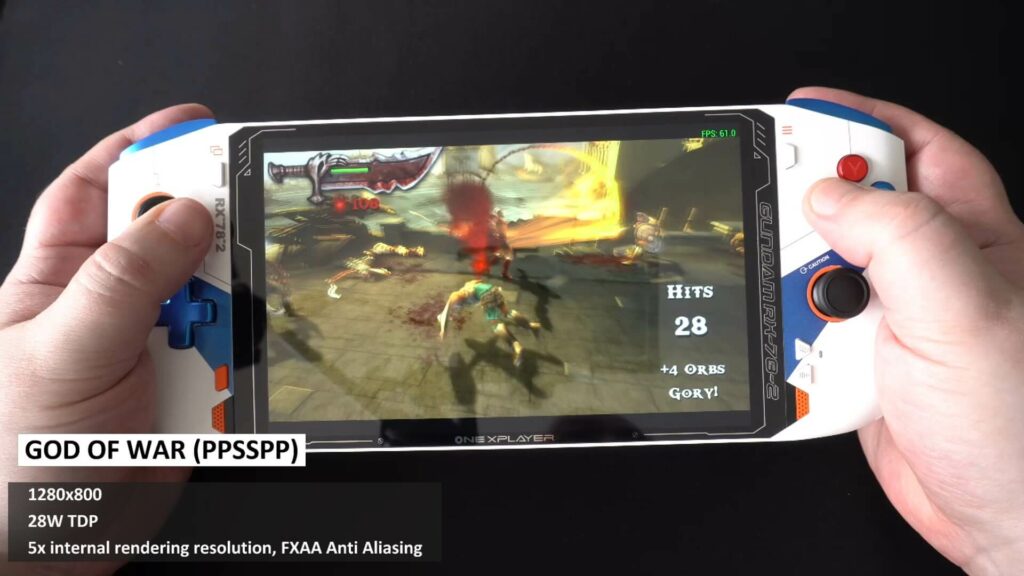
And another that you will have no issues with is the PlayStation Portable emulator PPSSPP. You get a rock solid 60 FPS at the default settings and everything looks fine. But you can vastly improve the visual quality with 5x rendering resolution (2400×1360) with FXAA Anti Aliasing, and still remain at a solid 60 FPS.
RPCS3
We are showing captured footage for PS3 as in our initial tests we were getting speeds from 40 to 60FPS as the shader caches were generated. However, when we went to record the actual on-camera gameplay footage a few days later, we updated the emulator and ran into issues with it freezing or slowdowns. So when the emulator is working, you can get some very good performance compared to the AMD processor handhelds.
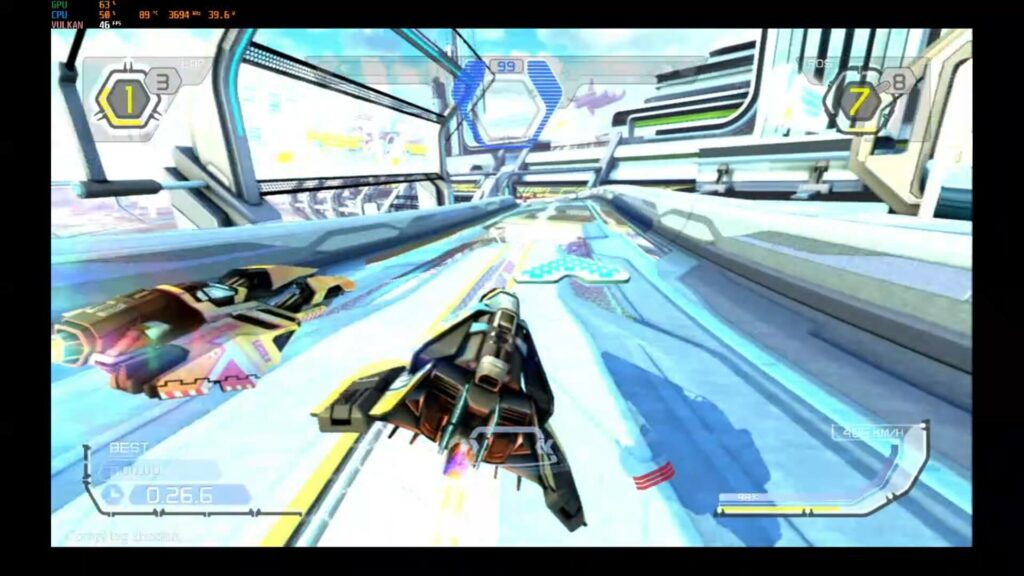
RyuJinx
On RyuJinx there is naturally mixed performance on games due to the emulator still being work in progress. We tried a number of games and a decent number were running at full speed or at least at playable frame rates. Not every game will work, it’s the same for every handheld but it’s up there with AYA NEO’s performance.
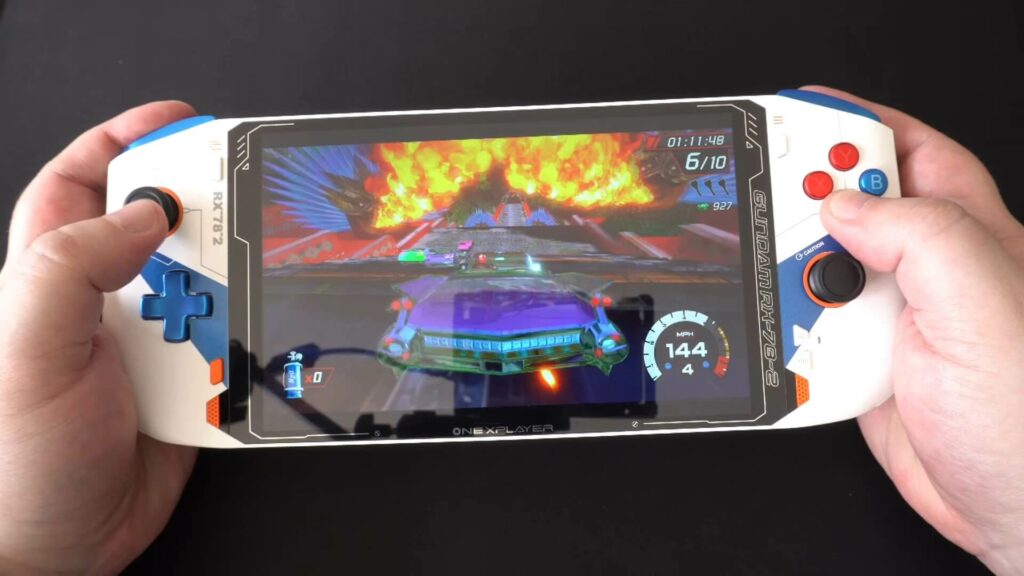
Where to buy the ONEXPLAYER Mini Gundam Edition?
Unfortunately it is not licensed for sale outside China so we are not able to sell this model at DroiX. But you can order one from here if you are interested in buying one.
Alternatively you can browse and buy our range of ONEXPLAYER models of which have similar or better performance then the Gundam edition.





